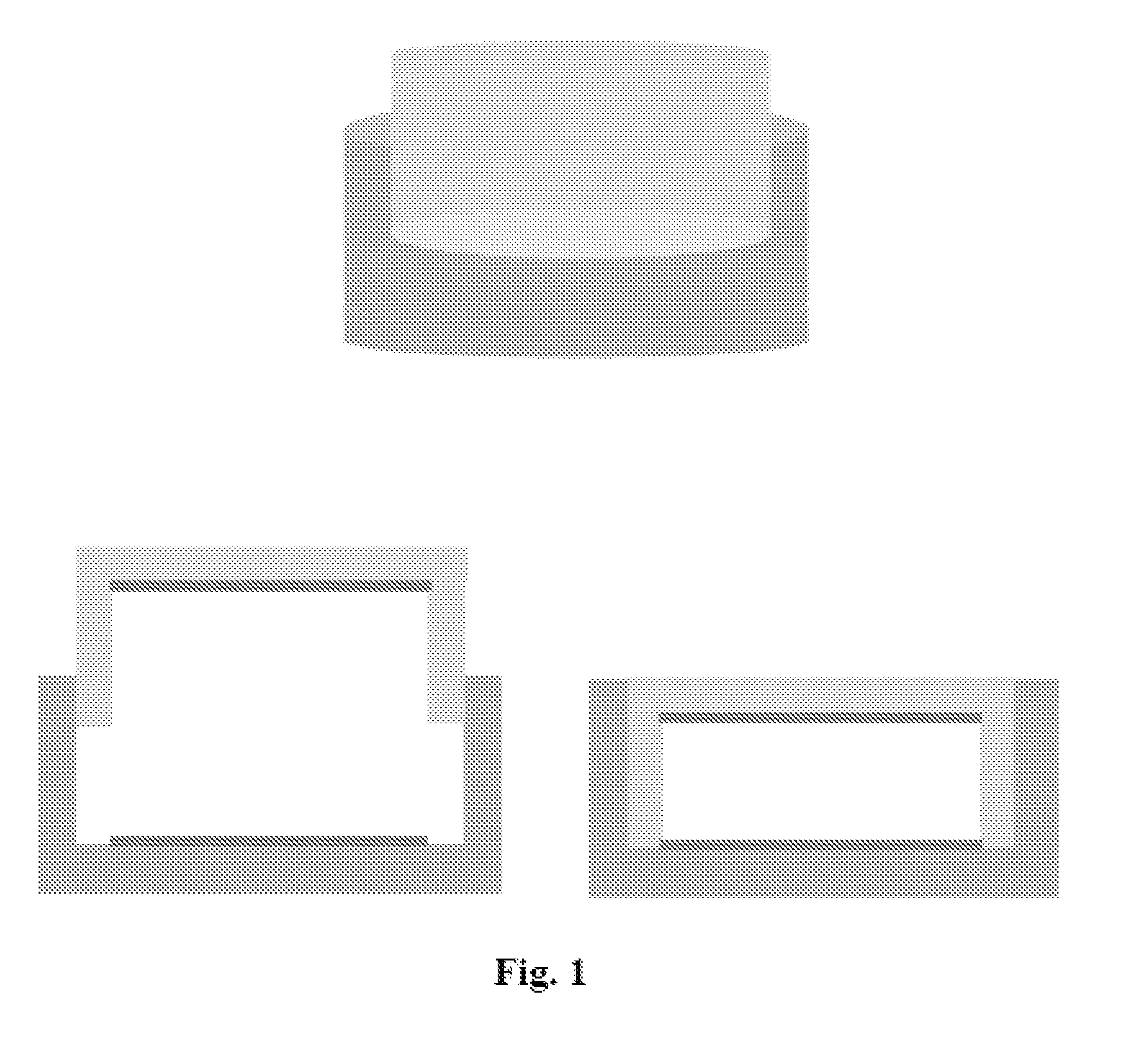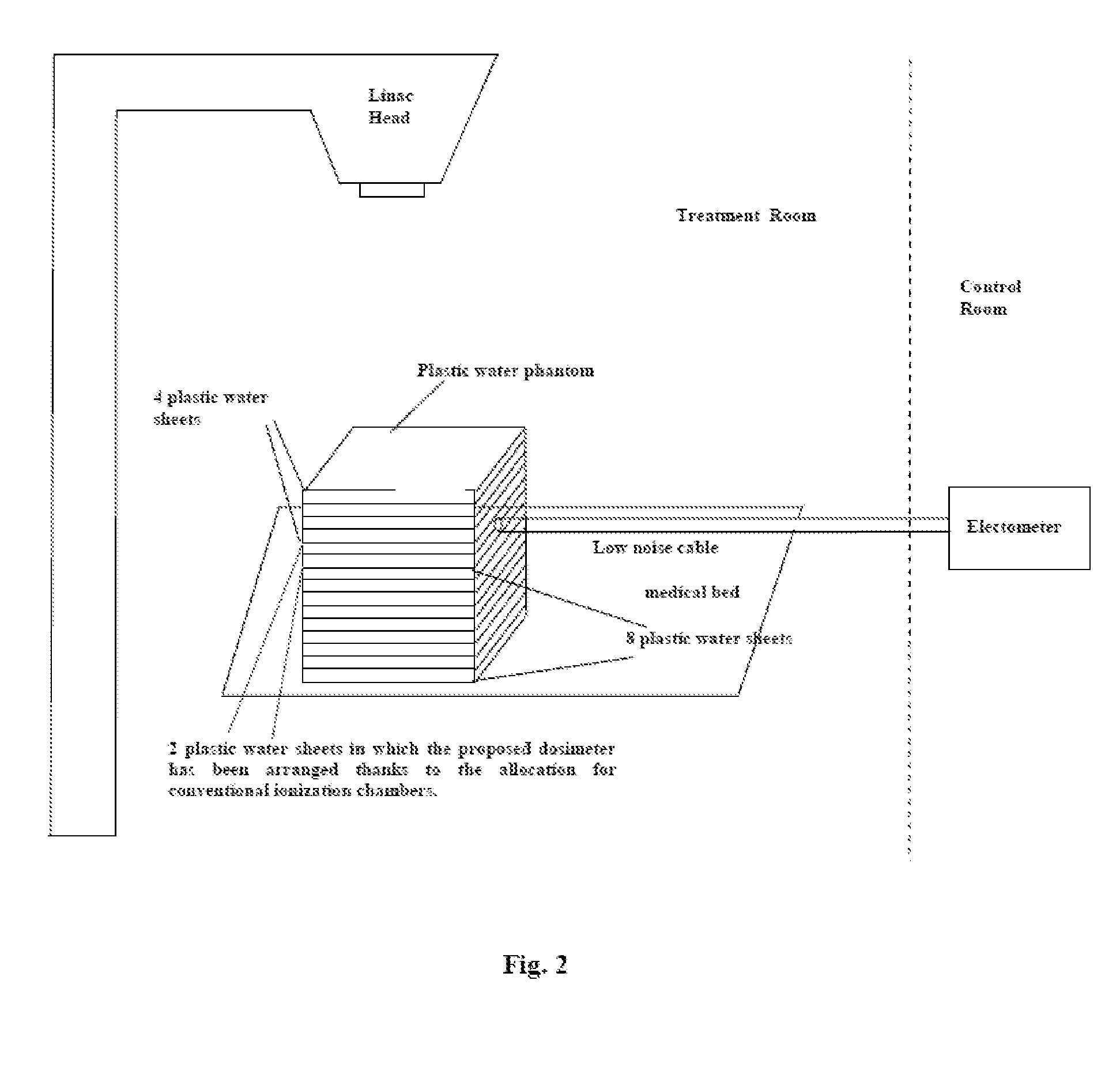Carbon nanomaterials based real time radiation dosimeter
a carbon nanomaterial and radiation dosimeter technology, applied in nanotechnology, chemical vapor deposition coating, inorganic chemistry, etc., can solve the problems of not being able to realize real time measurement, requiring complex calibration, and requiring wide and complex physical and dosimetric procedures
- Summary
- Abstract
- Description
- Claims
- Application Information
AI Technical Summary
Benefits of technology
Problems solved by technology
Method used
Image
Examples
example 1
[0041]In the first example, a ionization chamber, comprising an aluminium cathode and a carbon nanotubes forest based anode, is proposed as dosimeter (FIG. 3). In particular, a forest of vertically aligned MWCNTs were grown by CCVD on a silicon substrate.
[0042]To synthesise MWCNTs, nichel ferrite nanoparticles NiFe2O4 were first prepared by a wet chemistry approach (FIG. 4). In particular, Ni(acac)2 (1 mmol), Fe(acac)3 (1 mmol), 1.2 hexadecanediol (10 mmol), oleic acid (6 mmol), oleylamine (6 mmol), and phenyl ether (20 mL) were mixed and magnetically stirred under nitrogen flow. The mixture was heated to 265° C. for 30 min. Then, the black-brown mixture was cooled to room temperature and ethanol was added under ambient condition; the black material was precipitated and separated via centrifugation. The products were dispersed in hexane and stored in a vial.
[0043]The nanoparticles, dispersed in hexane, were patterned by microcontact printing using a PDMS stamp on silicon wafer SiO2 / ...
example 2
[0051]In the second example, the proposed dosimeter is a ionization chamber comprising an aluminium cathode and graphene layers based anode (FIG. 9).
[0052]Graphene layers were prepared on 25 μm copper foil by CCVD of methane diluted in nitrogen.
[0053]The synthesis was performed in isothermal conditions at 950° C., 100 (stp)cm3 / min flow rate, after 40 min pre-treatment of the foil from room temperature up to the synthesis temperature. The average cooling rate after the synthesis was 2° C. / min.
[0054]The experimental irradiation set-up was as in example 1 (FIG. 2).
[0055]The dosimeter was irradiated with 21 MU, 50 MU and 105 MU. A bias voltage of 310 V was applied between the electrodes which were distant 12 mm. Also in this case, the collected charge shows an excellent linear dependence on dose (FIG. 10).
PUM
| Property | Measurement | Unit |
|---|---|---|
| Electric potential / voltage | aaaaa | aaaaa |
| Electric potential / voltage | aaaaa | aaaaa |
| Distance | aaaaa | aaaaa |
Abstract
Description
Claims
Application Information
 Login to View More
Login to View More - R&D
- Intellectual Property
- Life Sciences
- Materials
- Tech Scout
- Unparalleled Data Quality
- Higher Quality Content
- 60% Fewer Hallucinations
Browse by: Latest US Patents, China's latest patents, Technical Efficacy Thesaurus, Application Domain, Technology Topic, Popular Technical Reports.
© 2025 PatSnap. All rights reserved.Legal|Privacy policy|Modern Slavery Act Transparency Statement|Sitemap|About US| Contact US: help@patsnap.com



